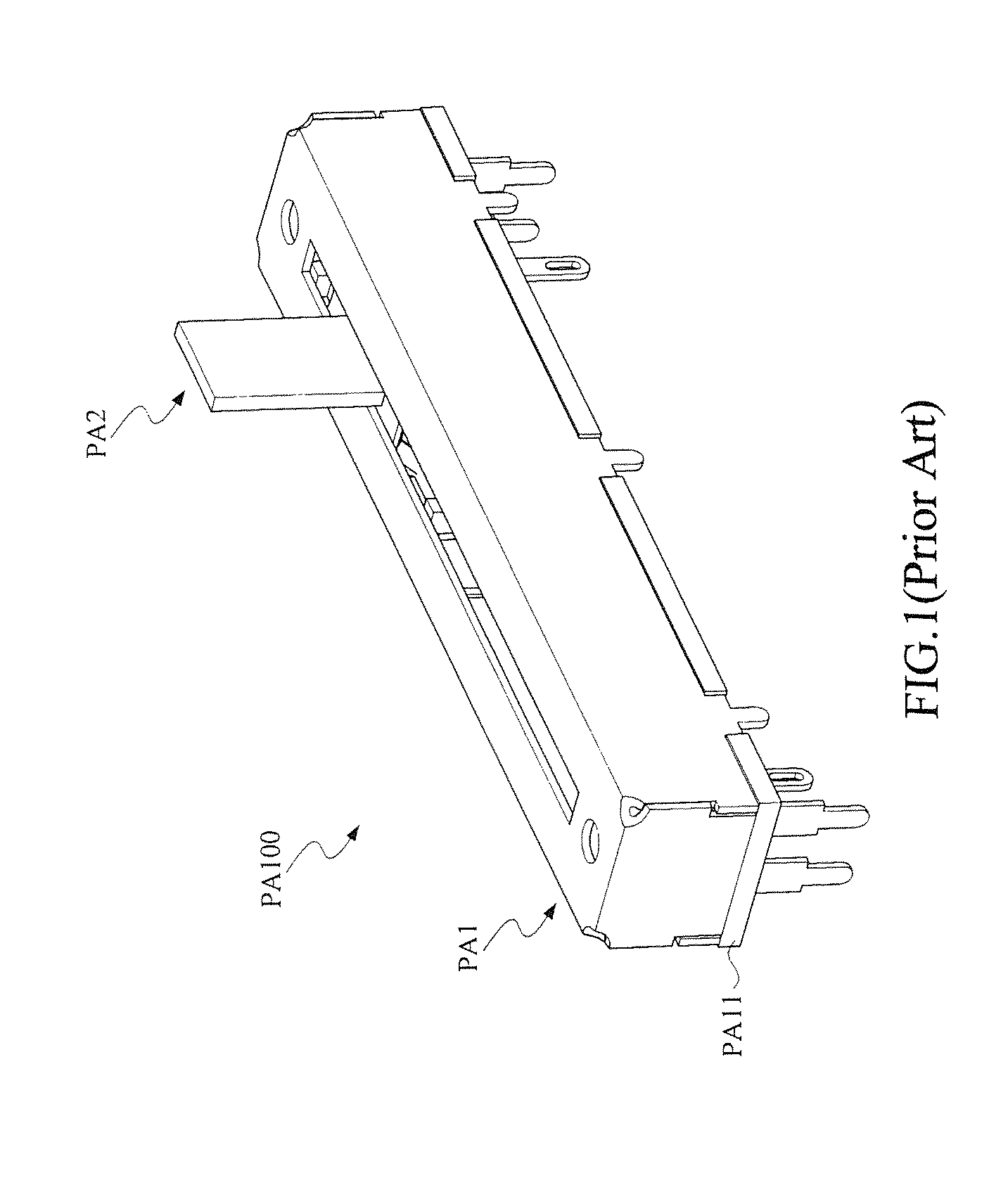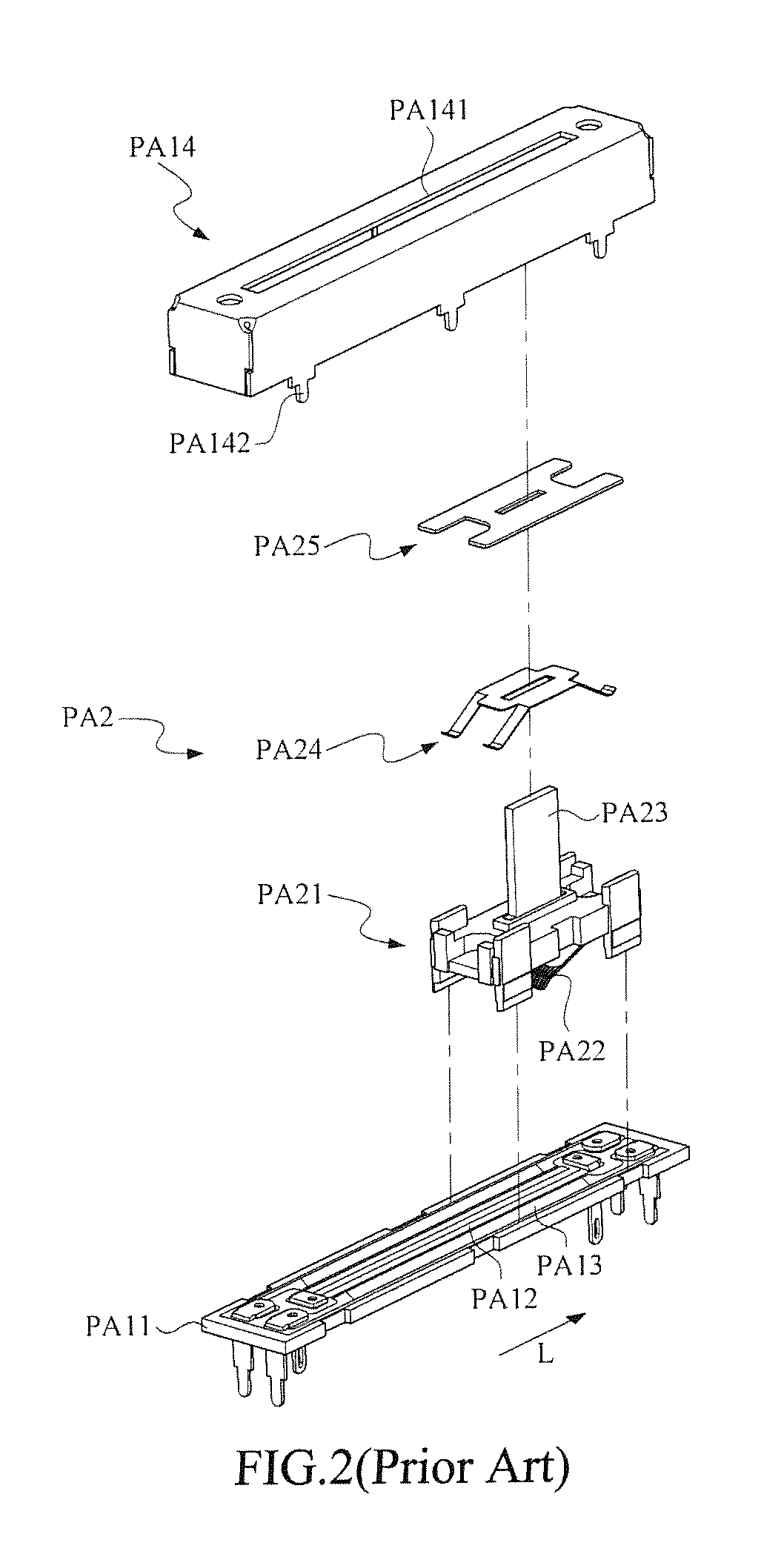Touch-type variable resistor structure
a resistor and variable technology, applied in the direction of resistor terminals/electrodes, resistors adjusted by mechanical pressure/force, resistors adjusted by short-circuiting resistive elements, etc., can solve the problem of limited operation sensitivity, and achieve the effect of reducing space occupation and limited operation sensitivity
- Summary
- Abstract
- Description
- Claims
- Application Information
AI Technical Summary
Benefits of technology
Problems solved by technology
Method used
Image
Examples
first embodiment
[0056]Refer now to FIG. 5, FIG. 6 and FIG. 7; in which FIG. 6 demonstrates a single-finger touch upon the aforesaid first embodiment of the touch-type variable resistor structure of FIG. 5, and FIG. 7 demonstrates a schematic view of the circuitry related to FIG. 6.
[0057]As shown, the first positive terminal 141 and the first negative terminal 142 are both electrically coupled to a power source 200a, while the second positive terminal 151 and the second negative terminal 152 are electrically coupled to another power source 200b. A first voltage detection element V1 is located between the electrode contact point 221 and the first positive terminal 141, and a second voltage detection element V2 is located between the electrode contact point 221 and the second positive terminal 151. In this embodiment, the output voltages for the power source 200a and the power source 200b are the same. However, in some other embodiments, the positive end of one power sources can be connected to both t...
second embodiment
[0065]Refer now to FIG. 11 and FIG. 12; in which FIG. 11 is a schematic exploded view of the touch-type variable resistor structure in accordance with the present invention, and FIG. 12 is another view of FIG. 11.
[0066]As shown, the touch-type variable resistor structure 100′ includes a resistor-base plate 1′, a conductive base plate 2′ and a separator member 3′.
[0067]The resistor-base plate 1′ includes a main plate body 11′, two first resistance layer 12a and 12b, a plurality of first detection circuit layers 13a and 13b, a first electrode set 14′ and a second electrode set 15′. The main plate body 11′ has a touch portion 111′ and a wiring portion 112′, in which the wiring portion 112′ is extended along a extension direction L2 from the touch portion 111′.
[0068]The first resistance layers 12a and the second resistance layers 12b are arranged in a predetermined interval manner on the touch portion 111′ of the main plate body 11′, and are all extended along the extension direction L2...
PUM
 Login to View More
Login to View More Abstract
Description
Claims
Application Information
 Login to View More
Login to View More - R&D
- Intellectual Property
- Life Sciences
- Materials
- Tech Scout
- Unparalleled Data Quality
- Higher Quality Content
- 60% Fewer Hallucinations
Browse by: Latest US Patents, China's latest patents, Technical Efficacy Thesaurus, Application Domain, Technology Topic, Popular Technical Reports.
© 2025 PatSnap. All rights reserved.Legal|Privacy policy|Modern Slavery Act Transparency Statement|Sitemap|About US| Contact US: help@patsnap.com



